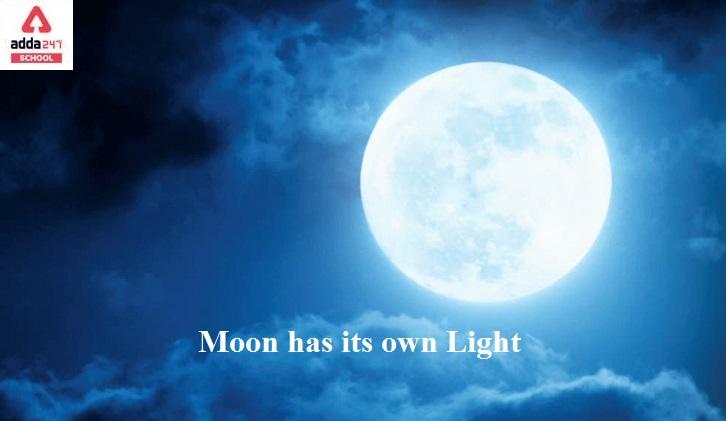Table of Contents
The majority of Moonlight has reflected sunlight from portions of the Moon’s surface where the Sun’s light strikes.
The brightness of moonlight varies widely depending on the lunar phase, yet even the full Moon only delivers about 0.05–0.1 lux illumination. The illuminance of a Full Moon near perigee viewed from the tropics around the upper culmination can reach 0.32 lux.
Due to the Purkinje effect, moonlight appears bluish to the human eye when contrasted to most artificial light sources, especially around the full moon.
The bond albedo of the Moon is 0.12, which means that just 12% of incident sunlight is reflected by the lunar surface. It takes around 1.26 seconds for moonlight to reach Earth’s surface. Moonlight, which is scattered throughout the Earth’s atmosphere, brightens the night sky by diminishing the contrast between lesser stars and the background. As a result, many astronomers avoid observing sessions during the full moon.
Read About: Greenpeace Moment
Does Moon has its own light: How are Moonbows and Moondogs created
There are two phenomena related to moonlight:
- A moonbow is kind of a rainbow that is created by moonlight instead of direct sunlight. Aside from the light source, its formation is identical to that of a solar rainbow: It’s caused by light refraction in a large number of water droplets, such as in a rain shower or a waterfall, and it’s always in the opposite part of the sky from the Moon.
- The refraction of moonlight by hexagonal-plate-shaped ice crystals in cirrus or cirrostratus clouds causes a moon dog, a rather rare brilliant circular point on a lunar halo. They are similar to sun dogs, but they are rarer because the Moon must be bright. When the moon is around a quarter moon or more, the moon dogs can be seen. Because their light isn’t intense enough to trigger the cone cells, moon dogs appear to have a little colour to the naked human eye.
Read about: Folk dance of India
Moon has its own light: Mythologies
Moonlight is said to have a negative effect in mythologies. Sleeping in the light of a full Moon, for example, was thought to turn a person into a werewolf on certain nights. The Moon’s light was supposed to aggravate the symptoms of lunatics, and sleeping under moonlight could render one blind or insane. Sleeping in moonlight in the tropics was considered to cause night blindness due to a lack of vitamin A.
Equine recurrent uveitis is known as “Moon blindness.” The reason is no longer assumed to be moonlight.



 CUET PG Result 2025 Soon @exams.nta.ac.i...
CUET PG Result 2025 Soon @exams.nta.ac.i...
 NEET Admit Card 2025 Release Date, How t...
NEET Admit Card 2025 Release Date, How t...
 CUET UG 2025 Vs CUET UG 2024, Check Majo...
CUET UG 2025 Vs CUET UG 2024, Check Majo...










